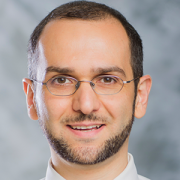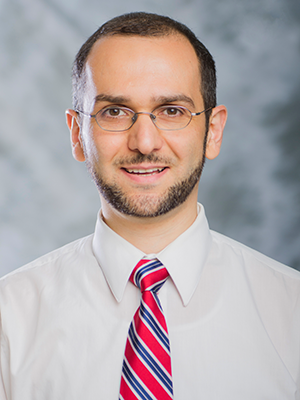State of Celiac Disease in the United States
![]() Vahe Badalyan, M.D., director of the Children’s National Celiac Disease Program, discusses the current state of celiac disease in the United States, including diagnosis and care among pediatric populations.
Vahe Badalyan, M.D., director of the Children’s National Celiac Disease Program, discusses the current state of celiac disease in the United States, including diagnosis and care among pediatric populations.
Q: In your opinion, how would you classify the state of Celiac Disease among children in the United States as it compares to 10 years ago?
A: Celiac disease in the United States is increasingly recognized as a common disorder of childhood. While this can partly be attributed to improved recognition and more testing by primary care providers, “true incidence” of this immune-mediated disease is also said to be rising, independent of the screening practices.
While there is a larger variety of gluten-free food options available today, these options are often more costly than their gluten-counterparts. Additionally, gluten-free food options are not covered by insurance companies. With inflation and rising food prices, there is a real concern for increased economic burden and food insecurity for the families of children with celiac.
Q: Are there any misnomers about Celiac Disease that you think are important to address?
A: Classic symptoms of celiac disease, including diarrhea and malnutrition, now occur in a minority of celiac patients. There is a rising proportion of milder or asymptomatic presentation at the time of diagnosis. Paired with the fact that most celiac patients identified through mass-screening did not have a family history of celiac disease (~90%) or gastrointestinal symptoms (70%), one may need to have a high index of suspicion for children with atypical presentation, such as neurologic symptoms, iron and vitamin D deficiency.
Q: What excites you about the future of treatment for Celiac Disease?
A: I am encouraged that researchers across the globe are testing new, pharmacologic therapies for celiac disease. Some of the tested compounds, such as latiglutenase or TAK-062 , involve breaking down gluten-using enzymes, while others, such as TAK-101 aim to induce immune tolerance. These compounds are still at the early stages of the long and arduous process of drug development and approval. Current randomized trials typically include adults, although some recently opened enrollment to adolescents. While there are no guarantees, I am cautiously optimistic that in the future we will have pharmacologic, non-dietary treatment options for celiac disease.
Q: How is Children’s National a leader in the field of pediatric Celiac Disease?
A: Concerns about gluten exposure can be quite stressful for our patients and families, which can lead to hypervigilance, anxiety and even depression. We are fortunate to have a full-time psychologist, Shayna Coburn, Ph.D., as part of our Multidisciplinary Celiac Disease Program team. This allows us to treat not only physiological symptoms and concerns associated with celiac disease, but to also evaluate the psychological problems that may arise as a result of the condition.



 In a new
In a new 

